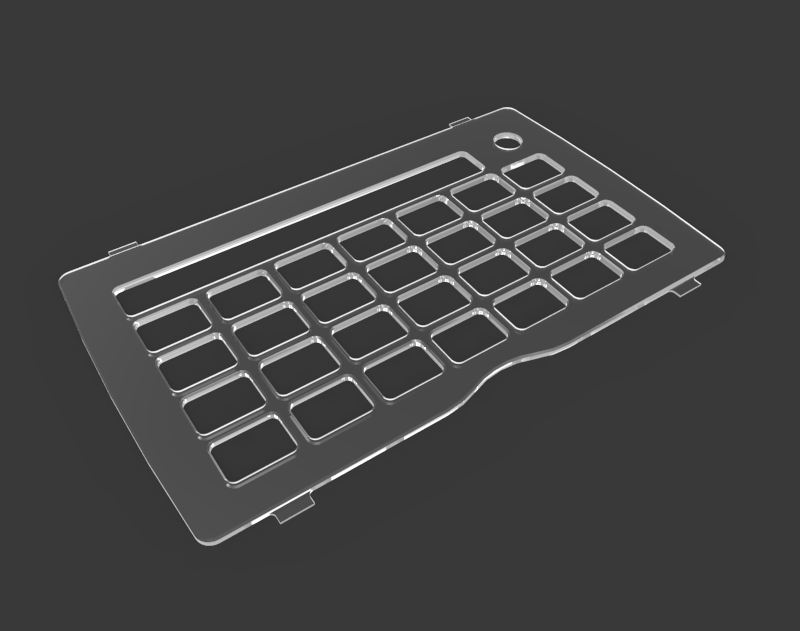AAC Keyguards
Some people who directly access (touch) an AAC device to help them communication benefit from using a keyguard to help guide their touches. This can help improve their accuracy and reduce mishits or unintended activations of the screeen and can make communication faster and more efficient. A keyguard is a piece of clear plastic that covers the screen of the device with cutouts for the areas that need to be tocuhed to activate a command or generate speech.
I’ve also created a repository for touch guides. These are often very similar but typically use larger openings on thicker 3mm material.
This is a hardware, not a software repository. I’ve included for most keyguards a dxf file that can be used to manufacture the keyguard using a CNC machine. For some, I’ve also included an stl file and an image. It is normally clear which device the touch guide is for by the folder name.
These keyguards have been designed to be manufactured on a CNC machine. We would typically use 3mm thick PET-G material for its durability and better chemcial resistance. We find it to be very scratch resistant. Typically, a chamfer would be added to the edge of each key at 45 degrees to remove the edge, typically to a depth of almost half the material thickness.
The dxf files can be used to laser cut a keyguard in alternative materials, such as acrylic. Laser cutting of plastics does produced a cleaner, almost polished edge, but you cannot chamfer the edges to reduce their sharpness.
Many local manufacturers will be able to manufacture touchguides on a CNC or laser cutting machine. You local maker space or worksop may also have facilities. Some companies such as Active Design in the UK can manufacture one off keyguards to the designs shown here, or your own designs.
Devices change frequently, so I would recommend printing the dxf file at full size onto acetate and offering up to the device with intended vocabulary to check the keys are in the correct place.
If you have worked on a keyguard not featured here, please share it. I’m also using the OpenAssistive portal to collate open assistive technology designs. This is a great way to get your designs out but still be able to host them where you choose, whether that’s GitHub, Instructables, Dropbox or elsewhere.
All of these design have been developed at the ACE Centre, one of the specialised hubs for AAC in England.
Don’t blame me for mistakes - they’re easy to make! Print them first to check - there’s a huge range of products, devices and vocabs now!
 Open Assistive
Open Assistive
